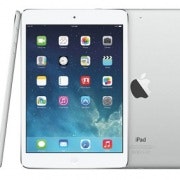Samsung Galaxy S4: approaching the smartphone singularity?
Bigger, thinner, faster -- the supersized Samsung Galaxy S4 once again promises to be the one smartphone to rule them all. But do we care about the spec sheet anymore?
When Samsung unveiled its latest Android flagship -- the Samsung Galaxy S4 -- pundits labelled it with all the same superlatives that they used for its predecessor last year. You'll hear them all again next year for the Galaxy S5, but you really have to wonder whether your average smartphone user cares anymore.
Run your eye down the Galaxy S4's spec sheet and most line items have been improved on the Galaxy S3. The S4 boasts a sharper 13-megapixel camera, a faster four- or eight-core processor, a clearer 1920x1080 pixel display, a thinner 7.9mm body and a larger 5-inch screen. You can add to that support for global LTE roaming and 802.11ac Wi-Fi. This all sounds impressive and I could go on about each at length, but to be honest I don't recall people complaining that the S3 was lacking in any of these departments.
Perhaps the most noteworthy hardware change is that the display size has snuck up to a full five inches, offering vast tracts of screen real estate that would have put it in phablet territory not so long ago. You might think Samsung has finally gone too far, but thanks to the marvels of modern engineering the 5-inch S4 is a fraction narrower, thinner and lighter than last year's 4.8-inch Galaxy S3. Phablets such as the Galaxy Note II continue to push up towards 6 inches, but they're likely to become less relevant if smartphones settle on 5 inches as the new standard.
One has to wonder whether Samsung is pushing the limits of what's acceptable in terms of the smartphone form factor, although many people asked the same question when phones broke the 3.5 and 4-inch barriers. The "mine's bigger than yours" battle can only go so far and it's unlikely your average punter will tolerate a device larger than 5 inches in their hand or their pocket.
In terms of hardware it seems we've reached a key point in the smartphone wars, as the major players move from delivering revolutionary upgrades to simply delivering evolutionary updates. The focus has shifted from phones to tablets, but they'll also experience the same effect. Does it really matter if the next model is a few millimetres thinner or a few grams lighter?
Marketing departments will do their best to whip us into a frenzy each year, but the day could eventually come when people get as excited about a new-model mobile phone as they do about a new-model washing machine. Of course washing machine sales would be much higher if we bought them on 24-month contracts and then threw them away.
I wouldn't say we've reached the peak of smartphone hardware, just a significant plateau. The challenge with all mobile gadgets has always been to get more from less. For mobile devices, the next real game-changer is likely to come from origami-style flexible displays which fold out to transform from a phone to a tablet when required. Proof of concepts have been floating around for several years but we're still waiting for them to hit mass production. You can be sure that both Apple and Samsung have ideas on the drawing board. Alternatively, interface advances such as speech recognition could eliminate the need for a screen completely.
Samsung realises what Apple has known for some time -- people no longer care about how many giga-whatsits are under the bonnet, they only care about what a gadget looks like and what it can do for them.
For now the more interesting aspects of the Galaxy S4 revolve around features such as gesture recognition and eye tracking -- which are perhaps clues to the long-term future of mobile devices. The phone can tell whether you're looking at it, so when you look away it can automatically stop playing videos or scrolling text. You can also wave your hand at the phone to answer calls or change the music. At first glance these seem like unnecessary novelties, but it will be interesting to see first-hand whether they help or hinder the user experience.
Samsung's S-Voice has also ramped up its war of words with Apple's Siri. Now S-Voice can be more helpful while you drive. Meanwhile S-Translate can translate emails and texts between 10 languages -- employing text to speech or vice versa. The S4's extra grunt under the bonnet also supports advanced photography features such as the ability to erase people from shots or combine multiple frames into the one "drama shot".
It will be interesting to see whether you average user actually bothers with many of these new features, or whether Samsung is simply dreaming up more useless bells and whistles to encourage people to keep throwing away their old phones. The recent announcement that Visa PayWave will let all new Samsung smartphones act as NFC swipe n' go credit cards is perhaps the most exciting aspect of the Galaxy S4, although it received little attention at the S4 launch and it still remains to be seen whether Australians will get a taste of the action.
The fledgling mobile payment space is the new hot zone of the smartphone war -- as it genuinely makes the phone more useful for your average person. As for the basic hardware and form-factor, I don't think people will care too much until you can fold a 10-inch tablet in half to use it as a smartphone, and then fold it again to slip it into your pocket.















